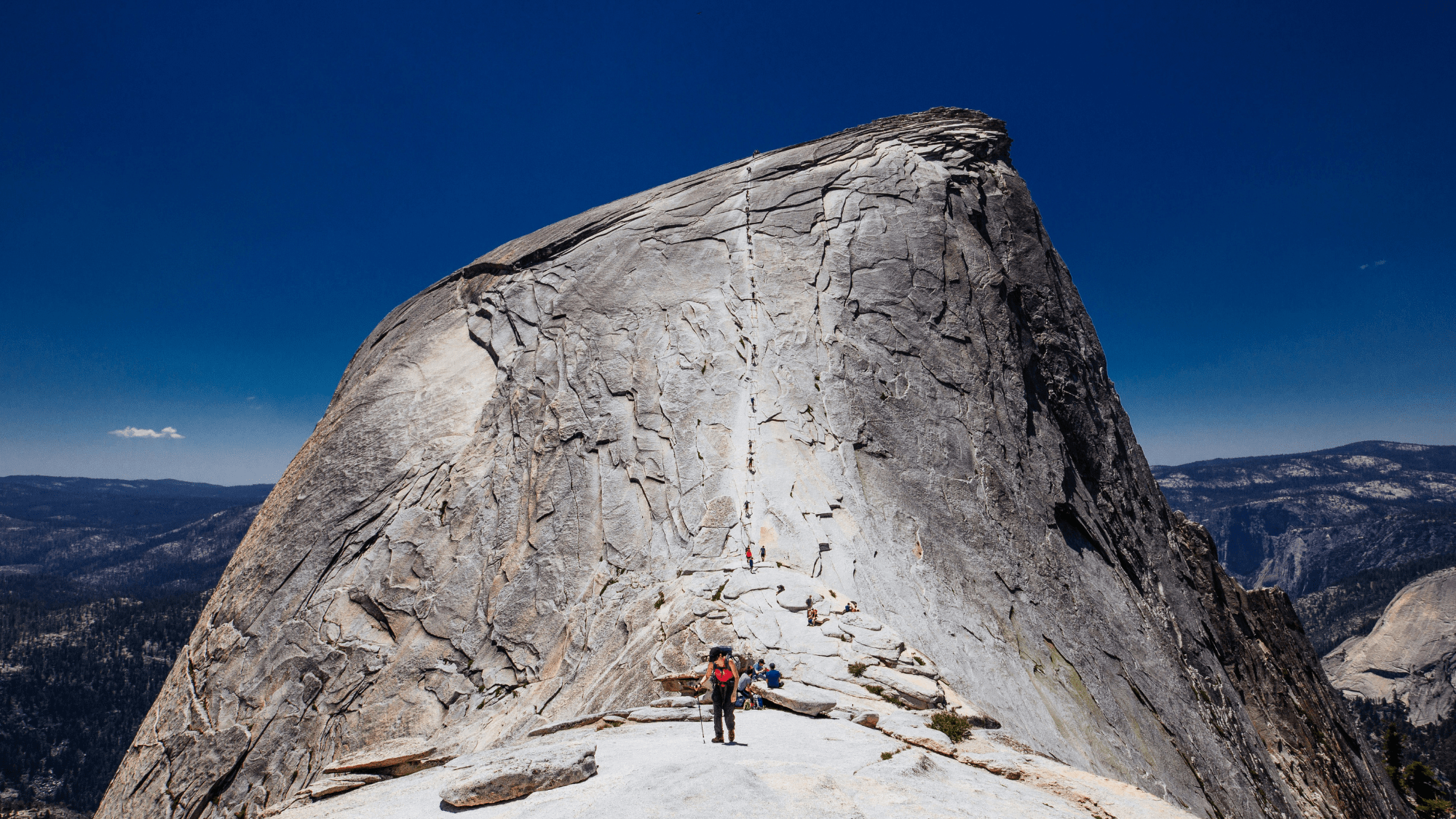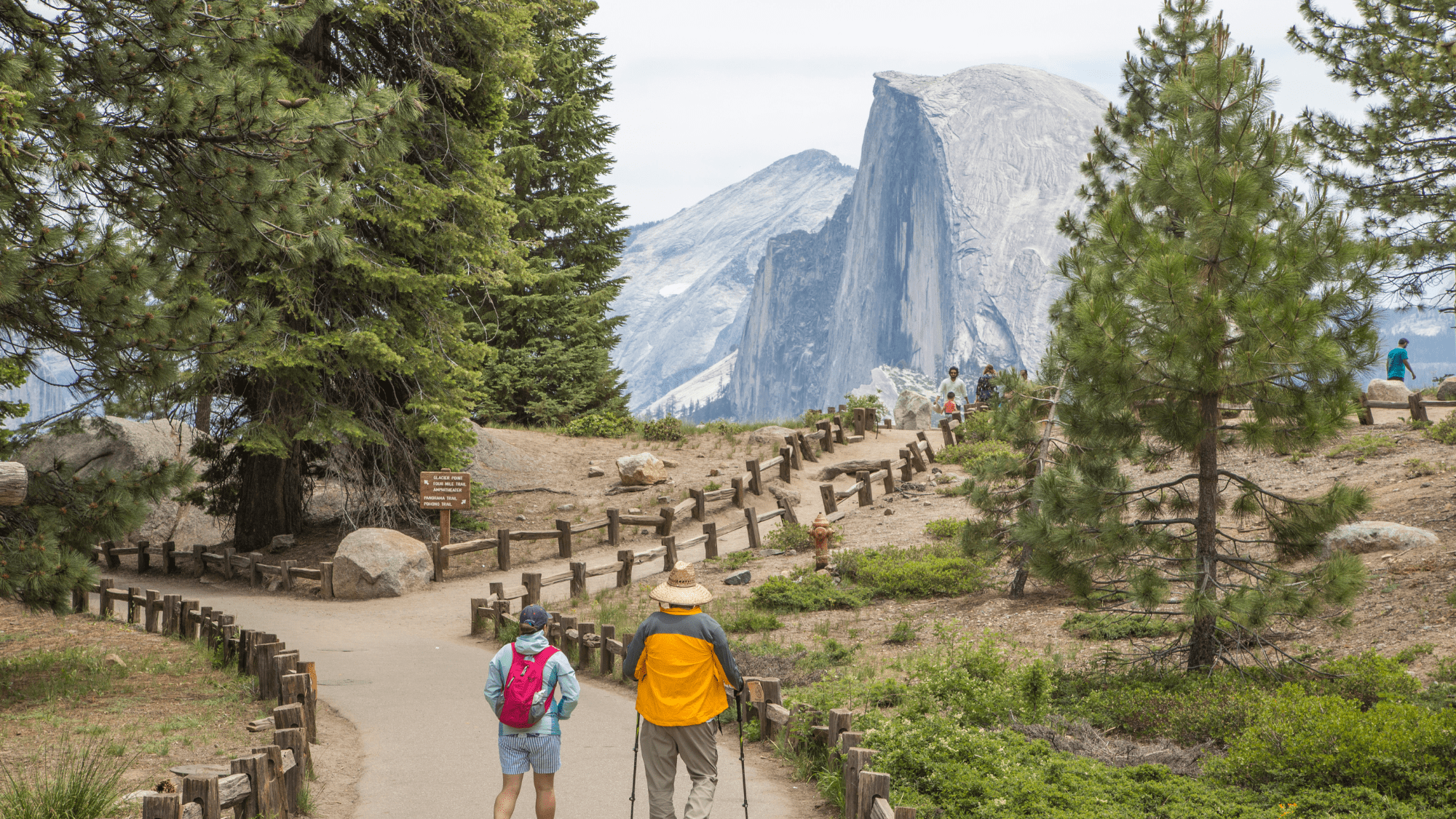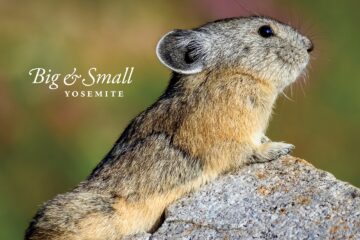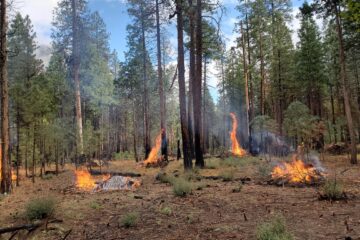Yosemite’s Visitor Access Management Plan
Yosemite National Park has proposed a new Visitor Access Management Plan that envisions a future that better serves park visitors, staff, and the species that call Yosemite home. The park’s preferred alternative will specifically address issues associated with high summer visitation — overcrowding, traffic congestion, and access to popular Yosemite destinations, like Bridalveil Fall, Glacier Point, and Valley trails, etc. — while ensuring that park staff can continue daily operations and efforts to protect Yosemite’s natural and cultural resources.
Currently, the plan is in its final stage of development, wherein the National Park Service (NPS) has analyzed four options for managing day-use visitation via reservation systems, and they are now assessing these options with a public comment period.
In this blog you’ll learn about the importance of an updated plan, proposed changes to park operations, and the impact of your voice/opinion. Quick links:
- The need for change.
- Proposed actions.
- Environmental consequences and species impact.
- Public comment period (+ step-by-step guide of how to leave comments).
The park service is planning a series of public meetings in the gateway communities of Mammoth Lakes, Groveland, Mariposa, and Oakhurst in early September. There is also a recording of a virtual public meeting on their website from August 22. Find all details on the NPS website.

The cables at Half Dome. Photo by Denys Nevozhai.
The Need for Change
Many of us have experienced congestion on the trails, roads, and parking lots of Yosemite — spending the first hours of our trips in a car waiting to pass the entrance kiosk, circling the Curry Village Parking lot, and shuffling past crowds on busy trails.
Over the past decade, many national parks have seen significant increases in visitation that has caused this overcrowding and congestion, especially during peak seasons. In Yosemite, this not only impacts visitor’s enjoyment of the park, it also:
- Limits visitors’ ability to access and enjoy meaningful experiences.
- Threatens visitor and staff safety during potentially life-saving calls when emergency responders are stuck in traffic.
- Endangers natural and cultural resources.
- Hinders staff’s ability to perform daily operations.
To address growing concerns, the NPS is proposing an adaptable visitor access management plan to “ensure meaningful and enjoyable visitor experiences in a way that preserves the park’s natural, cultural, wilderness, and recreational resources for the long term.”
The primary goals of the plan include:
- Providing equitable visitor access and use.
- Reducing road congestion.
- Reducing parking lot congestion.
- Improving quality of visitor experience.
- Reducing impacts on park facilities and operations.
- Reducing impacts on natural resources.
- Reducing impacts on cultural resources.
- Preserving wilderness character.
As a federal organization, the NPS is required by the NPS Organic Act and the National Environmental Protection Act (NEPA) to plan and make decisions that uplift park values without significantly impacting the environment. In accordance with the NEPA process, park staff developed a plan and environmental assessment (see the environmental impact section below) based on input provided by the public and stakeholders during two initial civic engagement sessions in 2023 — including in-person and online stakeholder meetings, public comment periods, and online educational materials.”
This input, along with pilot reservation systems implemented in the park between 2020 and 2024, allowed the project planning team to strategize four possible actions to achieve the goals listed above.
These possible actions (or “alternatives”) are described in the next section.
The NPS is accepting comments on these alternatives through September 30, 2024. Step-by-step information on how to leave a comment can be found in the final section of this blog.

Yosemite entrance station (top left); Crowd gathers in Yosemite Valley (bottom left); Cars wait in Yosemite Valley traffic (right). All photos by NPS.
Proposed Plan Actions
The NPS has proposed four options — alternatives A, B, C, and D — for managing current visitation levels at Yosemite National Park. While alternatives B, C, and D would change park operations and processes, option A is the no-action alternative, meaning the park would revert to management practices in place before 2020.
Plan A: No change to management. Visitors would continue to access the park on a first-come, first-serve basis 24 hours per day, primarily by private vehicles. The NPS would employ a reactive management approach, closing areas of the park when visitor demand/crowding for parking lots exceeded supply. Park staff would divert traffic as needed from high-demand areas. Visitors would likely still experience long delays at entrance stations and heavy congestion within the park.
Plan B: Parkwide Reservations – Peak Hours, Daily (NPS Preferred). Visitors would obtain a parkwide reservation to enter all areas of Yosemite during peak hours (5 am – 4 pm). Reservations under Plan B would be valid for a three-day period, in which visitors could enter and leave the park at any time during their reservation window. Ideally, Plan B will reduce congestion while allowing visitors flexibility in their visit.
Other important details about alternative B:
- Overnight reservation holders — campers, hotel guests, etc. — would have park access for a three-day period or the duration of their overnight reservation, whichever is longer.
- On days when entrance reservations are required, campground and wilderness permits would require reservations (i.e., no first-come, first-served permits).
Plan C: Parkwide Reservations – Timed Entry. Visitors would obtain a parkwide timed-entry reservation to enter all areas of Yosemite during peak hours (5 am – 6 pm). Under Plan C, timed-entry reservations would only be valid for one day, and visitors would be required to arrive at the park during a designated two-hour time window. Ideally, timed-entry will reduce surges of visitors during peak times.
Other important details about alternative C:
- Other reservation holders — campers, hotel guests, etc. — would be allowed entry at noon on the first day of their reservation.
- On days when entrance reservations are required, campground and wilderness permits would require reservations (i.e., no first-come, first-served permits).
Plan D: Yosemite Valley Access Reservations – Timed Entry. Day-use visitors would obtain a timed-entry reservation to enter Yosemite Valley. Visitors without a reservation would still be able to access all areas of the park outside of Yosemite Valley, but would not be able to enter the Valley. Only visitors with a Yosemite Valley access reservation would be able to enter the Valley during the reservation period (5 am – 6 pm).
Alternative D requires new infrastructure, roadway, parking, and transportation changes:
- A reservation checkpoint station would be developed near Bridalveil Fall. Minor roadway modifications would be needed to accommodate three booths and a turnaround lane at the checkpoint station.
- Southside Drive between Pohono Bridge and the junction with Wawona Road would transition to two-way traffic and a roundabout would be installed.
- Time-limited parking would be considered at crucial pullout areas.
- Creation and construction of clear signage to inform visitors of new systems.
- Restroom upgrades for visitors awaiting their time to enter the Valley.

The first 24-hour parkwide reservation system was piloted in 2020 when the park reopened after the start of the Covid-19 pandemic. Photo by NPS.
Common to All Alternatives. Regardless of the selected alternative, park staff will continue to use the following visitor use management strategies:
- Seasonally focused visitor communications to educate and support visitors.
- Technology improvements to improve vehicle processing times at park entrances.
- Free shuttle and transit systems provided for visitors, as funding allows.
- Continued unrestricted access for traditionally associated Tribes to their homelands.
- Nonrecreational pass-through travel allowed for residents residing in local zip codes.
- Private landowner access to their primary and secondary residences, and short- and long-term rentals.
- Commercial visitor services would continue to be reviewed and approved through concessions contracts and/or commercial use authorizations.
- Evaluate the capacity to transform temporary traffic controls and turnaround lanes into permanent structures.
- Temporary area closures in high-demand areas when monitoring indicates that a closure is needed to maintain desired conditions.
Now it’s your turn to share your thoughts on the drafted plan and proposed alternatives! Move on to the next section to read the full Visitor Access Management Plan and learn how to leave your public comment.

Hikers at Glacier Point.
Environmental Consequences
Changes in park visitation and operations can have significant effects on the local environment. To examine the impact of each of the alternatives, the park analyzed the impact of the plan on six different features. The Environmental Consequences chapter of the report goes into each feature in-depth. The features include:
- Visitor access, use, and experience.
- Socioeconomics.
- Special status species (state- and federally recognized threatened and endangered species).
- Wilderness character: Opportunities for solitude or primitive and unconfined recreation.
- Yosemite Valley Historic District.
- Archeological resources.
Here, we’ll look just at the section of special status species (state- and federally recognized threatened and endangered species) to model the in-depth analysis that the park has taken in the draft plan to consider the impact of each alternative.

Special status species analyzed in the Visitor Access Management Plan. Pacific fisher (left); California Spotted Owl (top right); Great Gray Owl (bottom right). All photos by NPS.
Impact on Special Status Species
Yosemite National Park is home to numerous iconic California species — black bears, mountain lions, marmots, bats, bobcats, frogs, and toads, to name a few — and many of these species are state and federally listed. To evaluate the potential environmental impact of the alternatives proposed, the NPS analyzed the expected impact on three special status species: the fisher (federally listed), the California spotted owl (proposed federally listed), and the great gray owl (state listed). These are species that Yosemite Conservancy has supported via continued funding.
These species were selected due to their high vulnerability to changes in the number and timing of vehicles traveling in the park — all three are more likely to be killed by cars at dusk and dawn when traffic is projected to increase under all three alternatives. Overall, the findings suggest that the increase of vehicular mortality (aka death by vehicle strikes) under all three alternatives is unknown, but potentially minor compared to the no-action alternative.
Plan A. Under the no-action alternative, the projected increase in visitation over time indicates a likely increase in vehicular mortality risk for species throughout the day.
Plan B. Under alternative B, the parkwide daily reservation system would be in effect from April through October from 5 am–4 pm. In response to this reservation system, park officials expect an increase in vehicle entrances (of individuals without reservations) to the park between midnight and 5 am.
This time period overlaps the peak activity periods of the special species, indicating that an overall increase in vehicle traffic could substantially increase the risk of predawn species being killed on the road. However, since the number of vehicles entering the park throughout the day is expected to decrease by 5% compared to plan A, the overall increase of vehicle strikes is unknown, but potentially minor.
Plan C. Under alternative C, the parkwide timed-entry reservation system would be in effect from April through October from 5 am–6 pm. This alternative would require visitors to arrive during a specific two-hour window. Although park officials expect a similar increase to plan B in terms of vehicle traffic between midnight and 5 am, data collected from other parks with timed-entry suggests that the incentive to enter the park before reservations start is lower when compared to a daily reservation system (plan B) because the total number of reservations available is greater.
Compared to plan B, visitors under plan C</spa have an easier time acquiring a reservation and there is less incentive to arrive very early in the morning. With the expected decrease of daily vehicular traffic of 5% compared to plan A, the overall increase of vehicular strikes is unknown, but potentially minor and less than plan B.
Plan D. Under alternative D, the timed-entry reservation system to enter Yosemite Valley would be in effect from April through October from 5 am–6 pm. This alternative would allow visitors to arrive at the park entrance stations at any time, without a reservation, but would require those wanting to enter Yosemite Valley to arrive within a designated two-hour window.
The incentive to enter Yosemite Valley without a reservation, together with reservation windows beginning as early as 5 am, would likely increase predawn park entry relative to the no-action alternative. Additionally, the time constraint may encourage speeding through special status species habitat to reach Yosemite Valley on time. While the quantities of these increases are unknown and limited by model projections, this alternative adds additional negative cumulative effects on Yosemite Valley relative to the other alternatives.

Yosemite Area Transit System (YARTS) bus in Yosemite Valley.
Public Comment Period
A final public comment period is the last stage of this multi-year planning process. The process began in the winter of 2022, and since then, the NPS has analyzed years of data and several thousand public comments — from all 50 states and several foreign countries — during previous rounds of engagement.
Before making a decision about plans for summer 2025, the NPS is eager to hear from the public on the final stage of the planning process: the potential environmental impacts of the proposed alternatives. We strongly encourage reading the draft Visitor Access Management Plan before forming your opinions and providing feedback. The NPS has also created an informative StoryMap on the plan.
Helpful comments WILL:
- Be submitted after reading the full management plan.
- Address the purpose and need for action.
- Discuss environmental issues analyzed in the report.
- Include your opinions on the alternatives, including mitigation measures that could reduce potentially harmful effects.
- For example, a helpful comment might discuss opinions on timed-entry alternatives (plans C and D), specifically touching on how long the entry window should be (one or two hours, etc.), and address potential environmental consequences.
Helpful comments will NOT:
- Be submitted more than once. The comment period is not a vote, and duplicative comments will not impact decision-making.
- Discuss topics outside of the Visitor Access Management Plan and the four alternatives.
Steps for accessing the draft plan:
- Visit the Visitor Access Management Draft Plan and EA website by clicking the link or copy/pasting the following url into your web browser: https://parkplanning.nps.gov/document.cfm?parkID=347&projectID=113113&documentID=138824.
- Scroll down to the bottom of the page and click the first link under Document Content — YOSE VAMP EA_508_2024-0816.pdf. The draft plan will immediately begin to download to your device.

Steps for submitting comments:
- Visit the Visitor Access Management Draft Plan Comment page by clicking the link above or copy/pasting the following url into your web browser: https://parkplanning.nps.gov/commentForm.cfm?documentID=138824.
- In the space provided, type out your city, state/territory, postal code, and any other information you’d like to include. Your comments in regard to the plan and proposed alternatives should be written under the “Comments” section. Please be aware that your entire comment (including personally identifiable info) may be made publicly available at any time.
- Click the bright blue “Submit” button to finalize your comment.
- If you wish to send your comments via hardcopy, click “Print Form” in the navigation bar on the left side of your screen.




